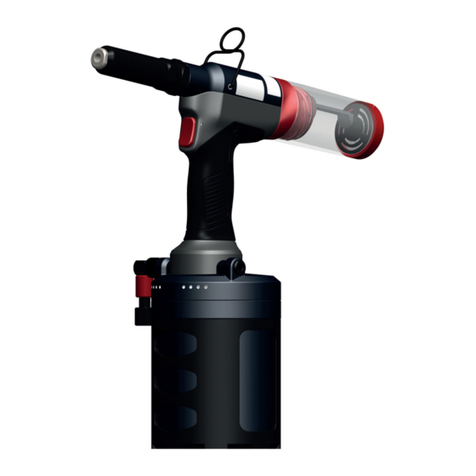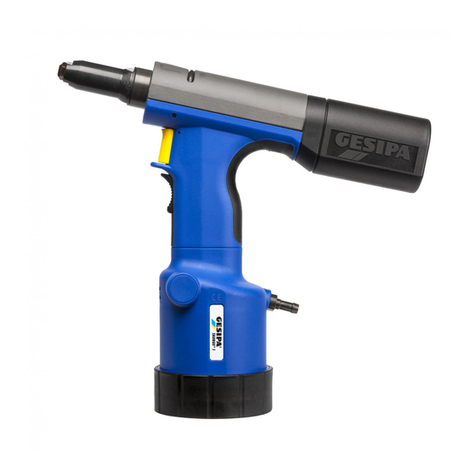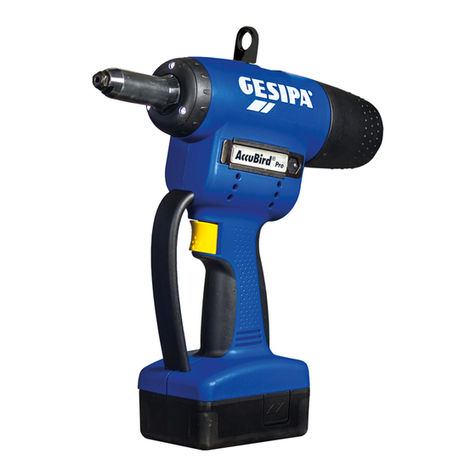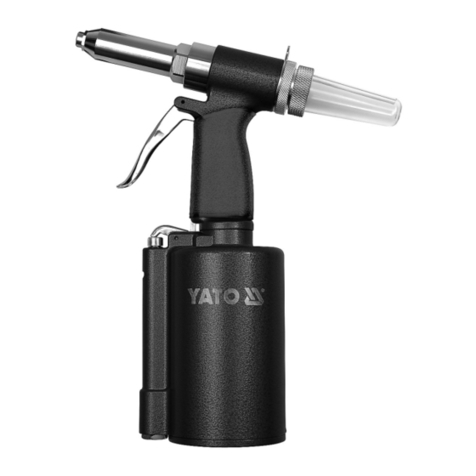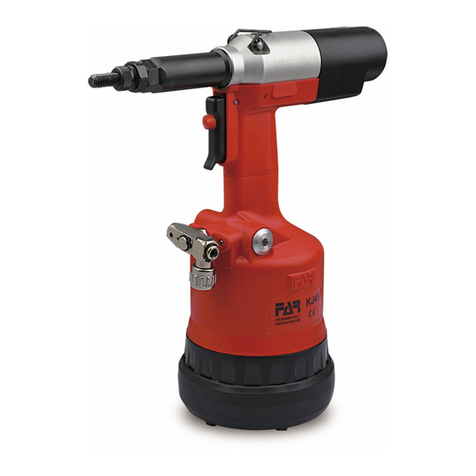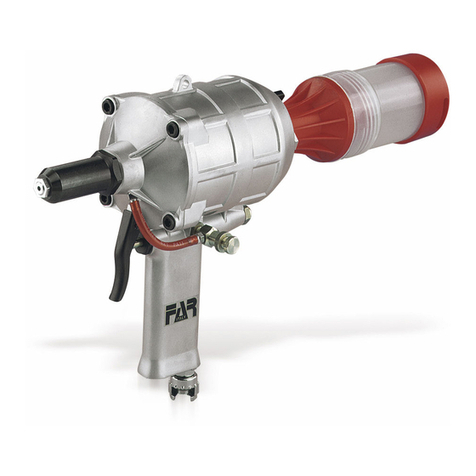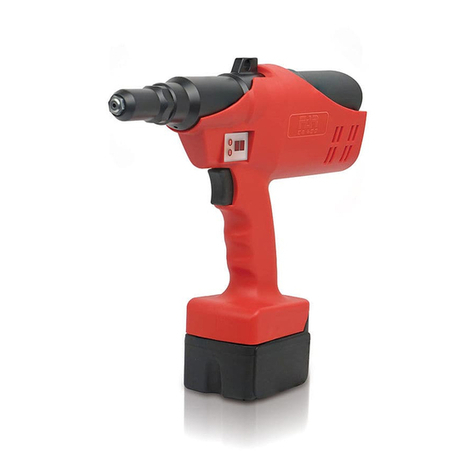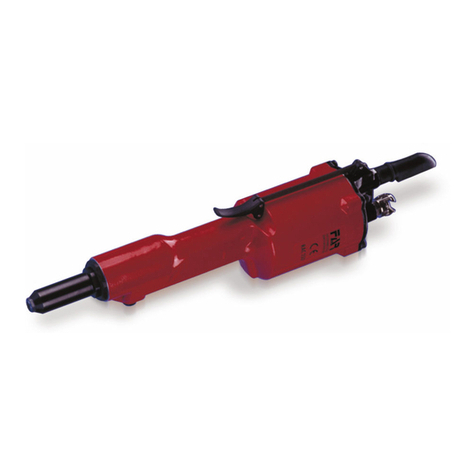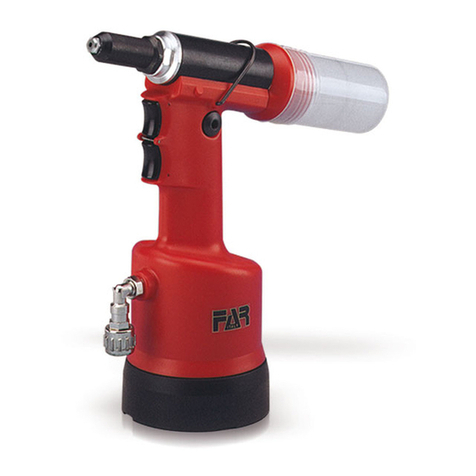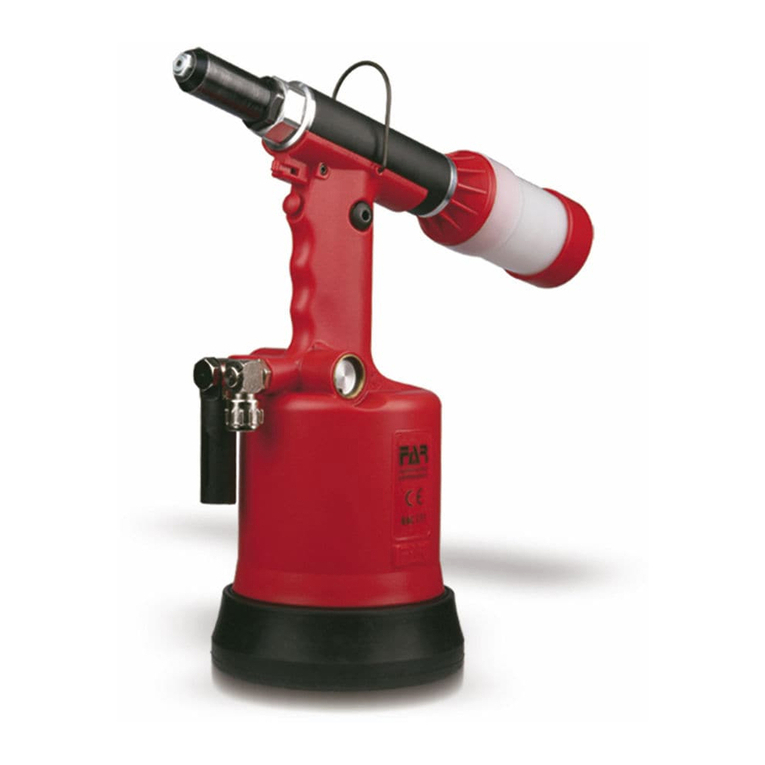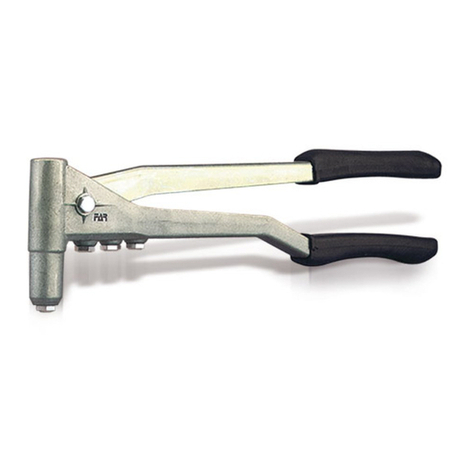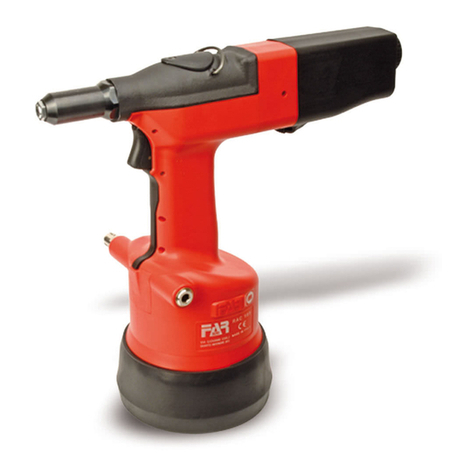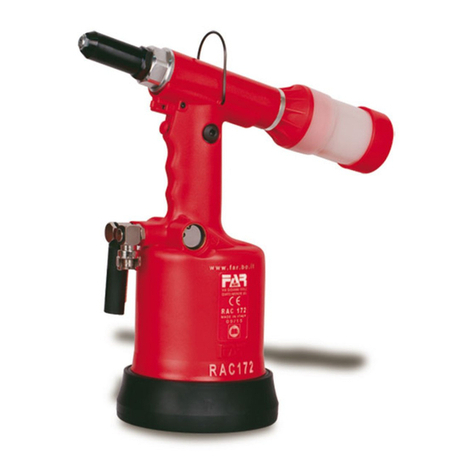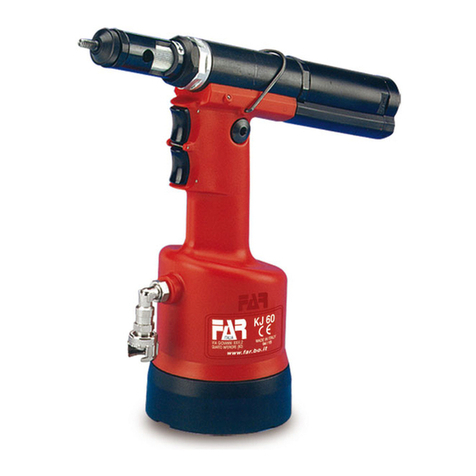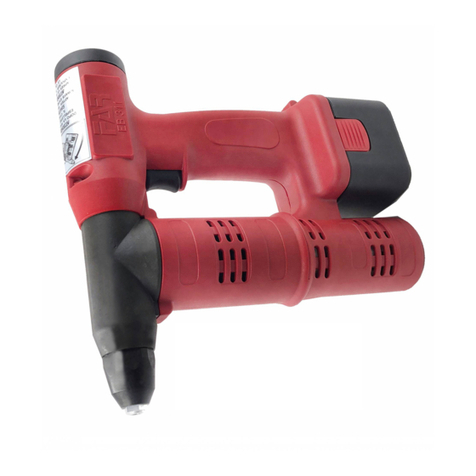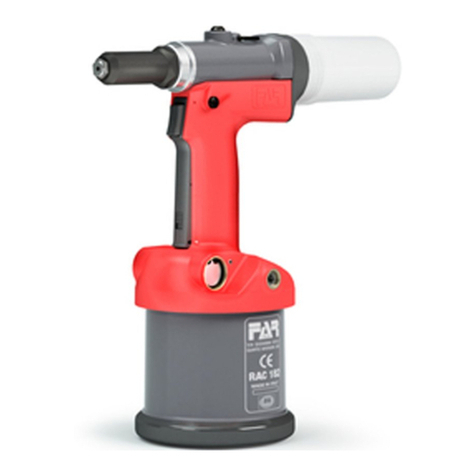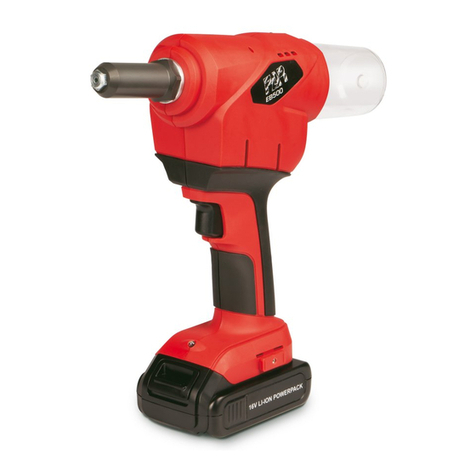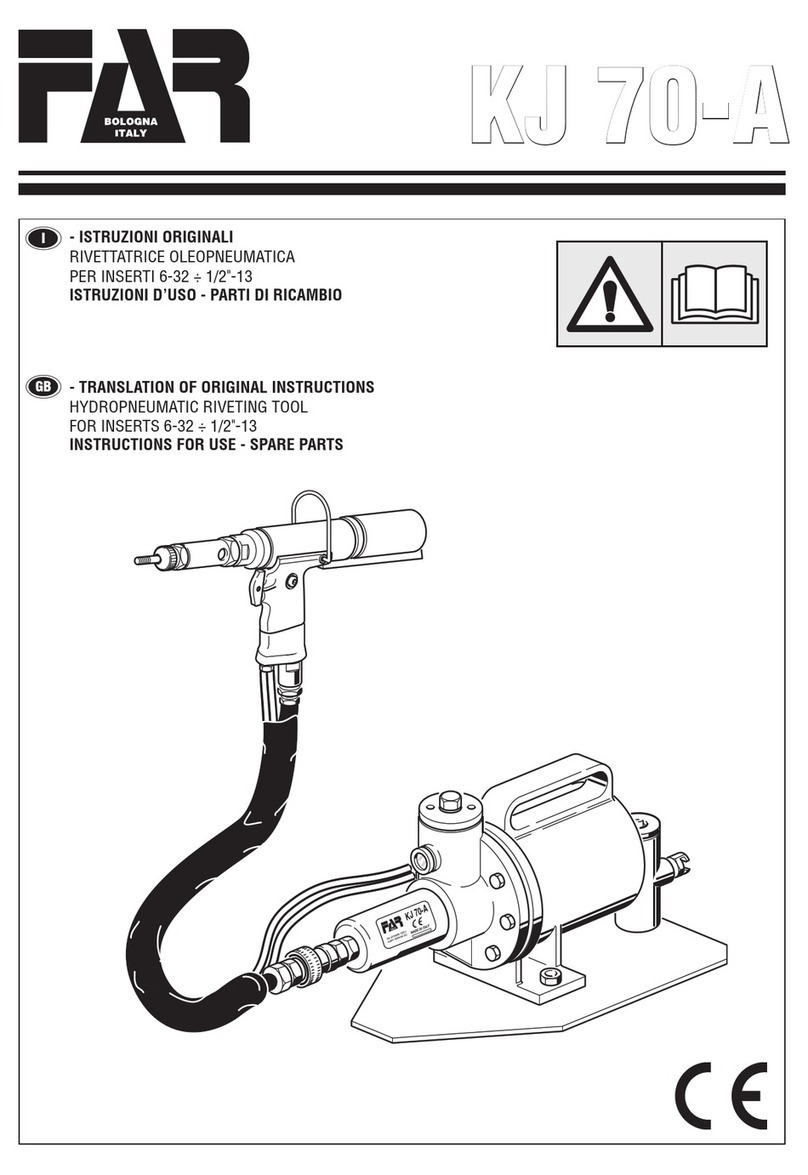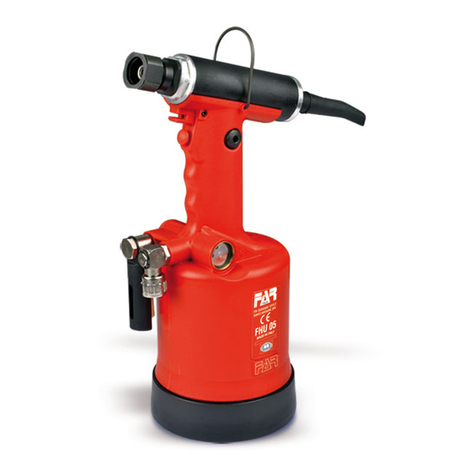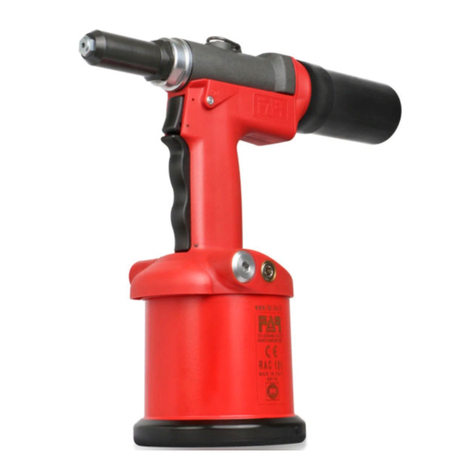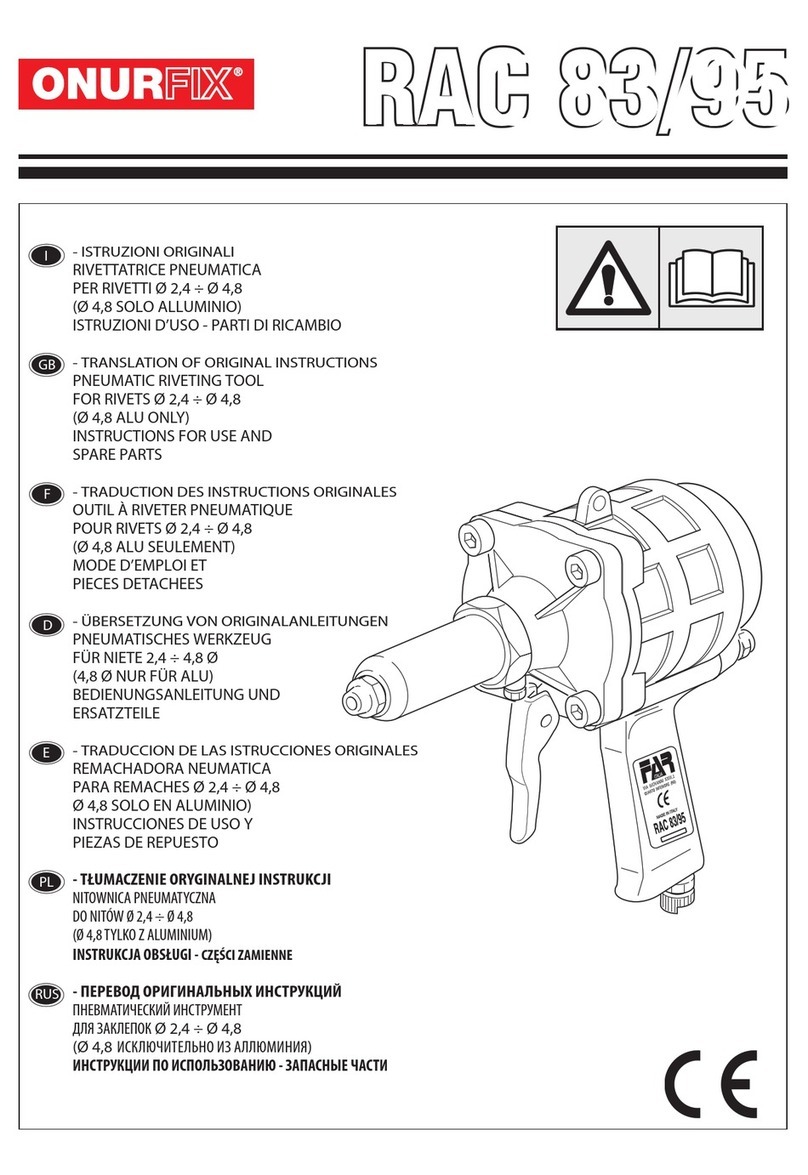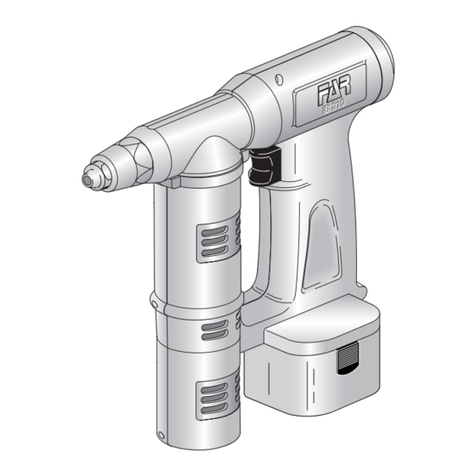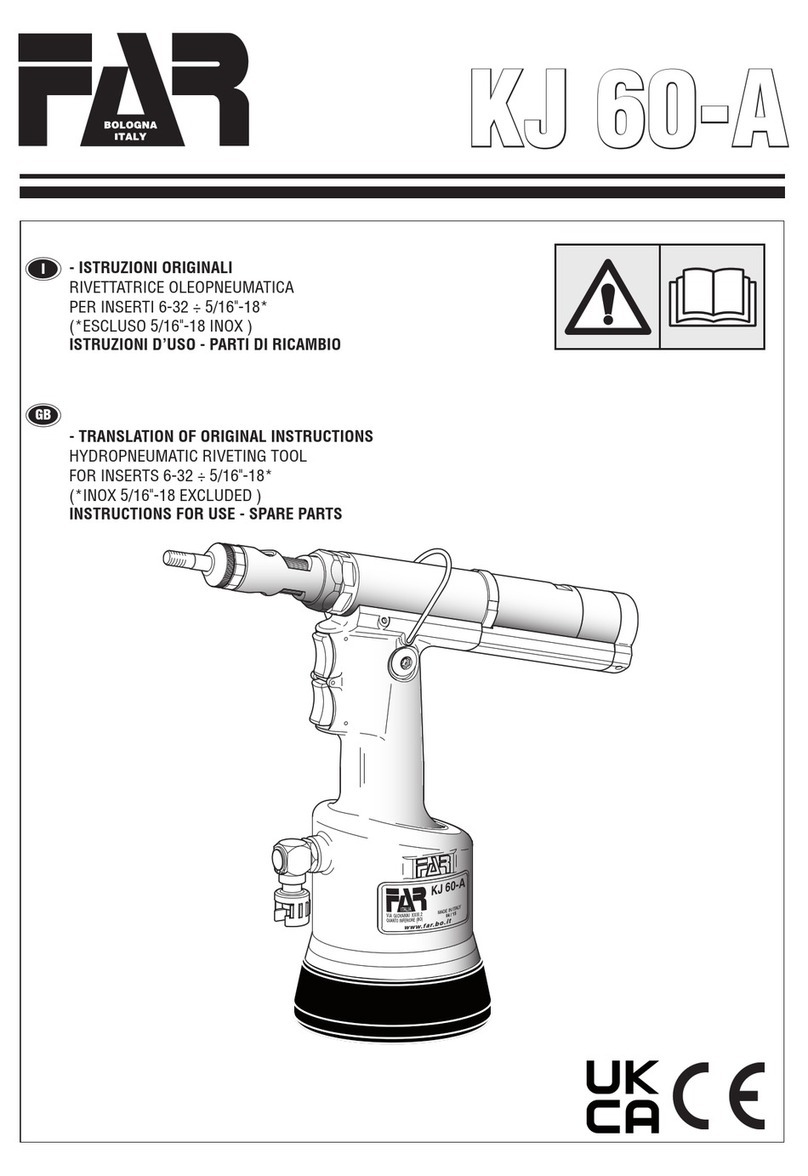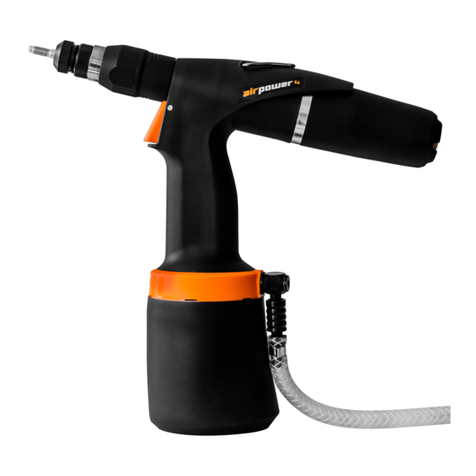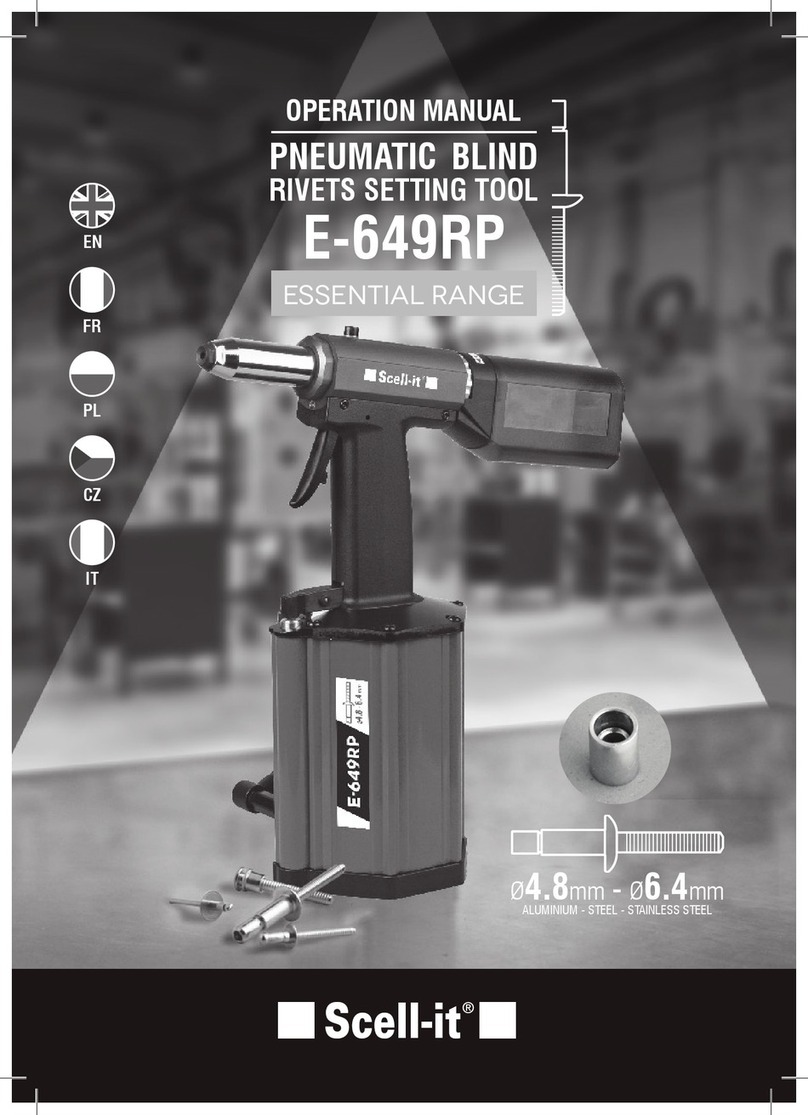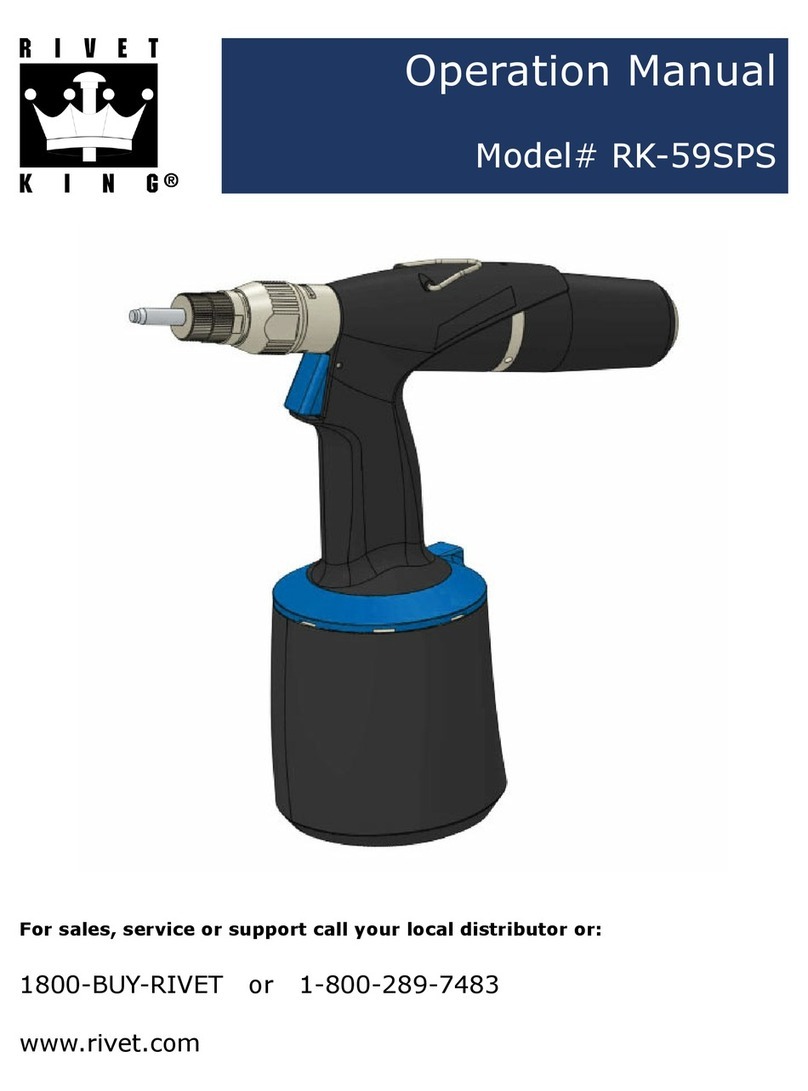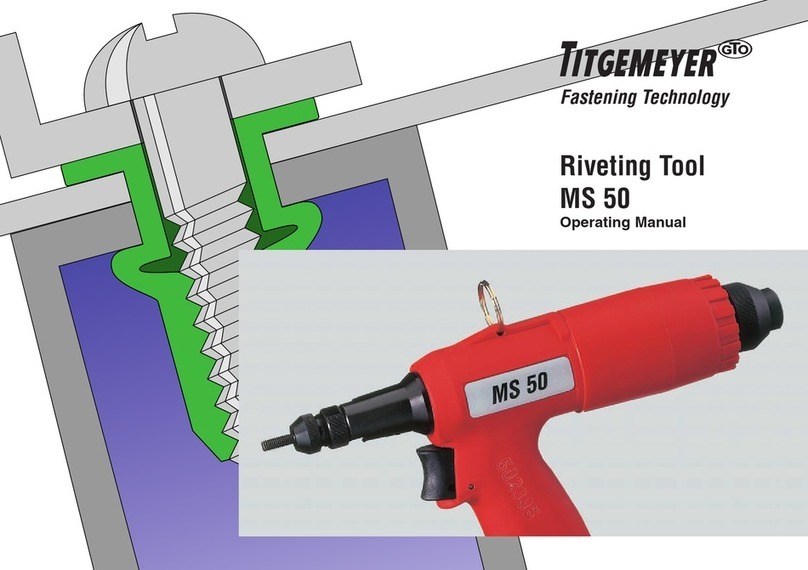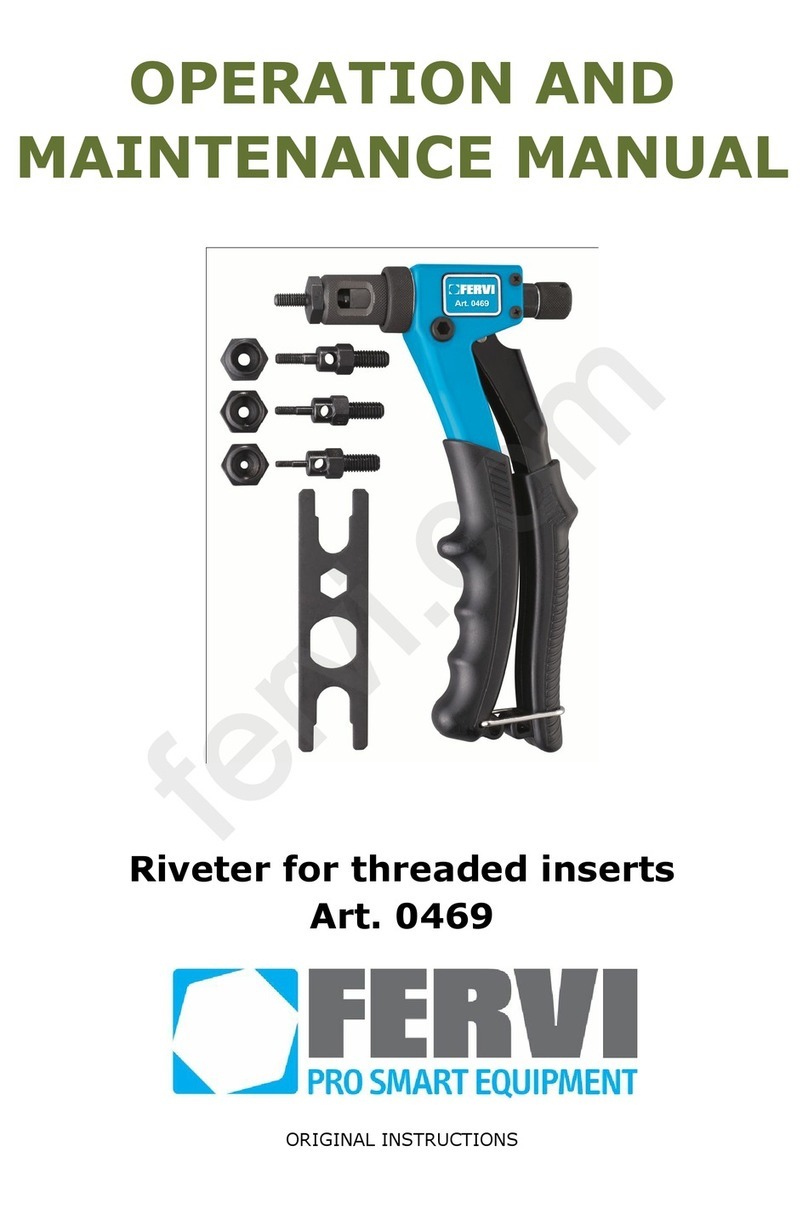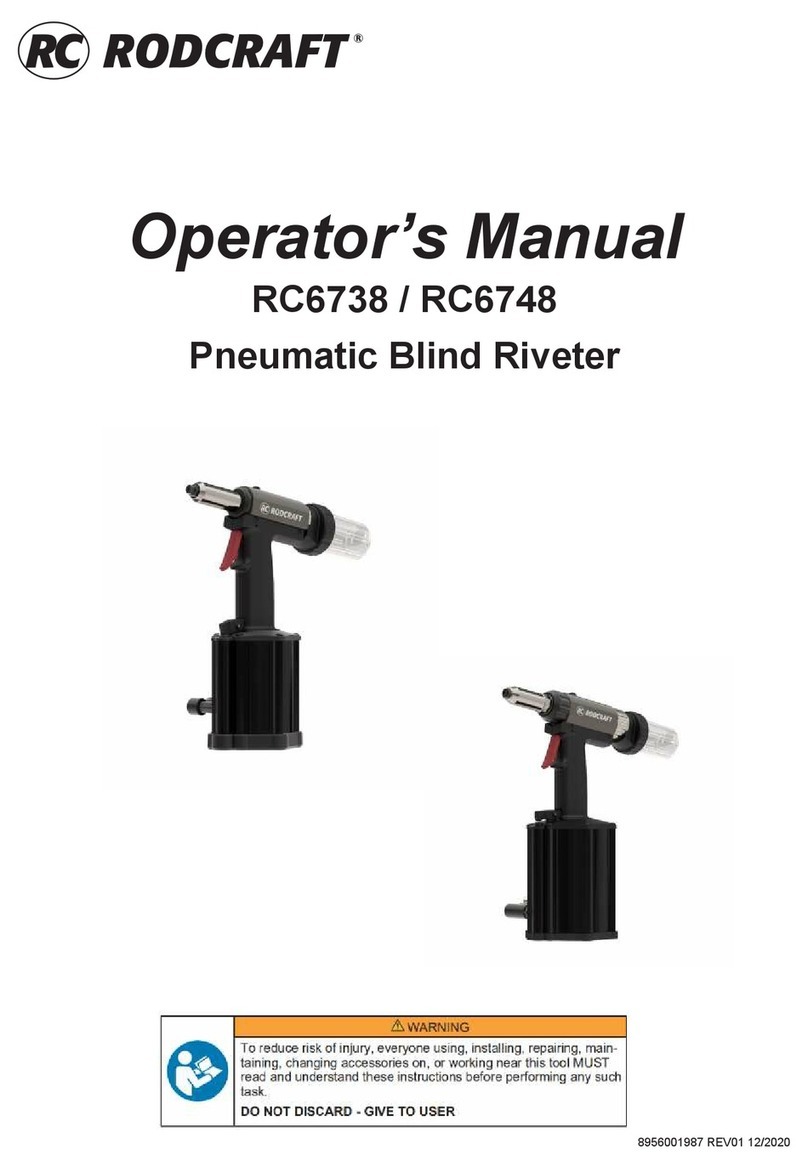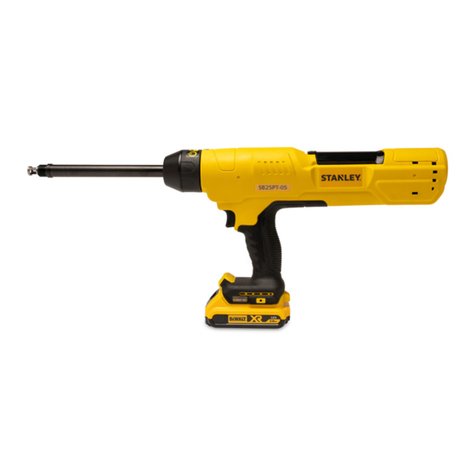
RAC 180
Far S.r.l. - Giacomo Generali
(Presidente del Consiglio di Amministrazione)
(Chairman of the Board of Directors)
(Président du Conseil d’Administration)
(Vorsitzender des Verwaltungsrates)
(Presidente del Consejo de Administración)
(Prezes Zarzadu)
( )
Quarto Inferiore, 23-03-2010
La sottoscritta Far S.r.l., con sede in Quarto Inferiore (BO) alla via
Giovanni XXIII n° 2,
DICHIARA
sotto la propria esclusiva responsabilità che la rivettatrice
Modello: RAC 180 - Rivettatrice oleopneumatica
Utilizzo: per rivetti diam. 2,4 ÷ 6 (6 solo alluminio)
alla quale questa dichiarazione si riferisce è conforme ai
requisiti essenziali di sicurezza previsti dal D.Leg.vo 17.2010 di
recepimento della Direttiva Macchine 2006/42/CE e successive
modificazioni ed integrazioni. La persona autorizzata a costituire
il fascicolo tecnico risponde al nome di Giacomo Generali,
presso la Far S.r.l., con sede in Quarto Inferiore (BO) alla via
Giovanni XXIII n° 2.
The undersigned Far S.r.l., having its office in Quarto Inferiore (BO),
Via Giovanni XXIII No. 2, herewith
DECLARES
on its sole responsability that the riveting machine
Type: RAC 180 - Hydropneumatic tool Application: for rivets diam.
2,4 ÷ 6 (6 aluminium only)
whichistheobjectofthisdeclarationcomplieswiththebasic
safety requirements estabilished in the law decree Leg. D.
17/2010 of Machinery Directive 2006/42/CE acknowledge
and subsequent amendments and integrations.
The person who is authorized to create the technical brochure is
Giacomo Generali, c/o Far S.r.l., head office in Quarto Inferiore
(BO), via Giovanni XXIII n. 2.
La société Far S.r.l. soussignée avec siège à Quarto Inferiore (BO),
Via Giovanni XXIII n° 2,
DECLARE
sous sa seule responsabilité que la riveteuse
Modèle: RAC 180 - Pistolet oléopneumatique
Utilisation: pour rivets diam. 2,4 ÷ 6 (6 alu seulement)
à laquelle cette déclaration se rapporte est conforme aux conditions
essentiellesde sécuritérequisespar laloi17/2010 d’acceptationdela
Directive Machines 2006/42/CE et modifications et intégrations
successives.
La personne autorisée à constituer le dossier technique est
Giacomo Generali chez FAR S.r.l., avec siège à Quarto Inferiore
(BO) – Via Giovanni XXIII. n.2.
Die Unterzeichnete, Fa. Far S.r.l., mit Sitz in Quarto Inferiore (BO),
Via Giovanni XXIII Nr. 2,
ERKLÄRT
hiermit auf ihre alleinige Verantwortung, daß die Nietmaschine Typ:
RAC 180 -
Hydraulisch-pneumatisches Nietwerkzeug
Anwendung: für Blindniete mit Durchmesser 2,4 ÷ 6 (6 nur für Alu)
auf das sich diese Erklärung bezieht, den wesentlichen
Sicherheitsanforderungen des Gesetzesdekrets 17/2010 von
Umsetzung der Maschinenrichtlinie 2006/42/CE und den
nachfolgenden Änderungen und Anfügungen entspricht.
DerBerechtigtezurBildungdertechnischeBroschüreistGiacomo
Generali,beiderFirma Far S.r.l.,mitSitzin Quarto Inferiore (BO),
via Giovanni XXIII Nr. 2.
La firmataria Far S.r.l., domiciliada en Quarto Inferiore (BO) en via
Giovanni XXIII n° 2,
DECLARA
bajo su exclusiva responsabilidad que la remachadora
Modelo: RAC 180 - Remachadora oleoneumática
Empleo: para remaches diam. 2,4 ÷ 6 (6 este último sólo aluminio)
alacuallapresentedeclaraciónserefierecorrespondealosrequisitos
esencialesdeseguridadprevistos porelD.Lay17/2010derecepción
de la Directiva Maquinas 2006/42/CE y sucesivas modificaciones
e integraciones.
La persona autirizada a constituir el fasciculo tecnico es Giacomo
Generali, cerca FAR S.r.l., con sede a Quarto Inferiore (BO) – Via
Giovanni XXIII n.2.
Niżej podpisana rma Far S.r.l., z siedzibą w Quarto Inferiore (BO),
via Giovanni XXIII nr 2,,
OŚWIADCZA
nawłasną iwyłącznąodpowiedzialność,żenitownicaModel:RAC180 -Nitownica
oleopneumatyczna
Zastosowanie: do nitów o średn. 2,4 ÷ 6 (6 tylko aluminium)
do której odnosi
sie niniejsza deklaracja, jest zgodna z wymogami bezpieczenstwa
przewidzianymi przez dekret legislacyjny 17/2010 implementujacy
Dyrektywe Maszynowa 2006/42/WE wraz z pózniejszymi zmianami
i uzupelnieniami.
“Osoba upoważniona do utworzenia dokumentacji technicznej to
GiacomoGenerali zrmy Far S.r.l. mającej siedzibęw Quarto Inferiore
(BO), via Giovanni XXIII nr 2”.
–FarS.r.l.,
: , (), XXIII 2,
ЗАЯВЛЯЕТ
,
: RAC 180 – –
: . 2,4 ÷ 6(6)
,
17/2010 2006/42/CE
.
(GiacomoGenerali),
FarS.r.l.,:,(),
XXIII, . 2.
.............................................
I
GB
F
D
E
PL
RUS
